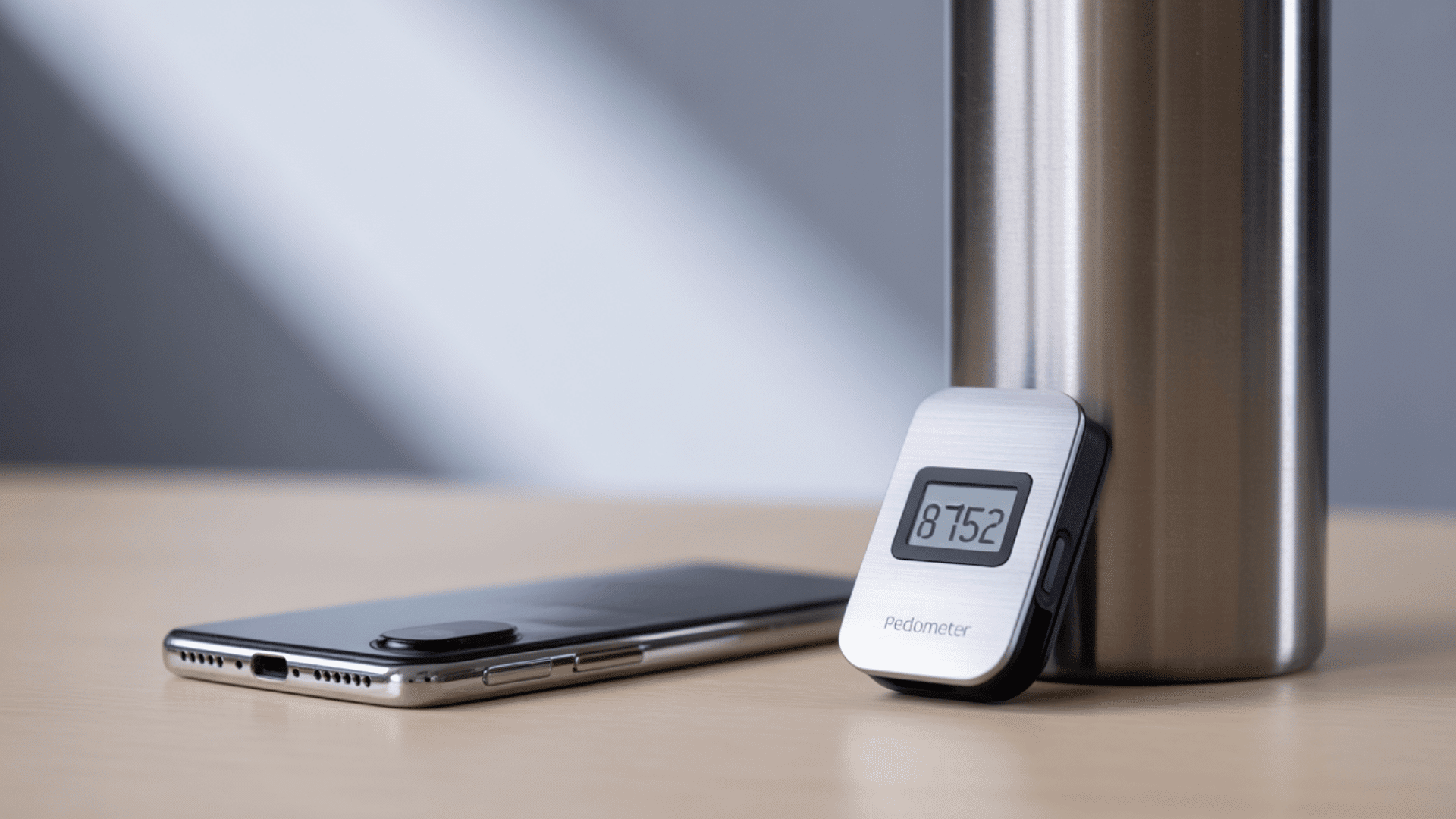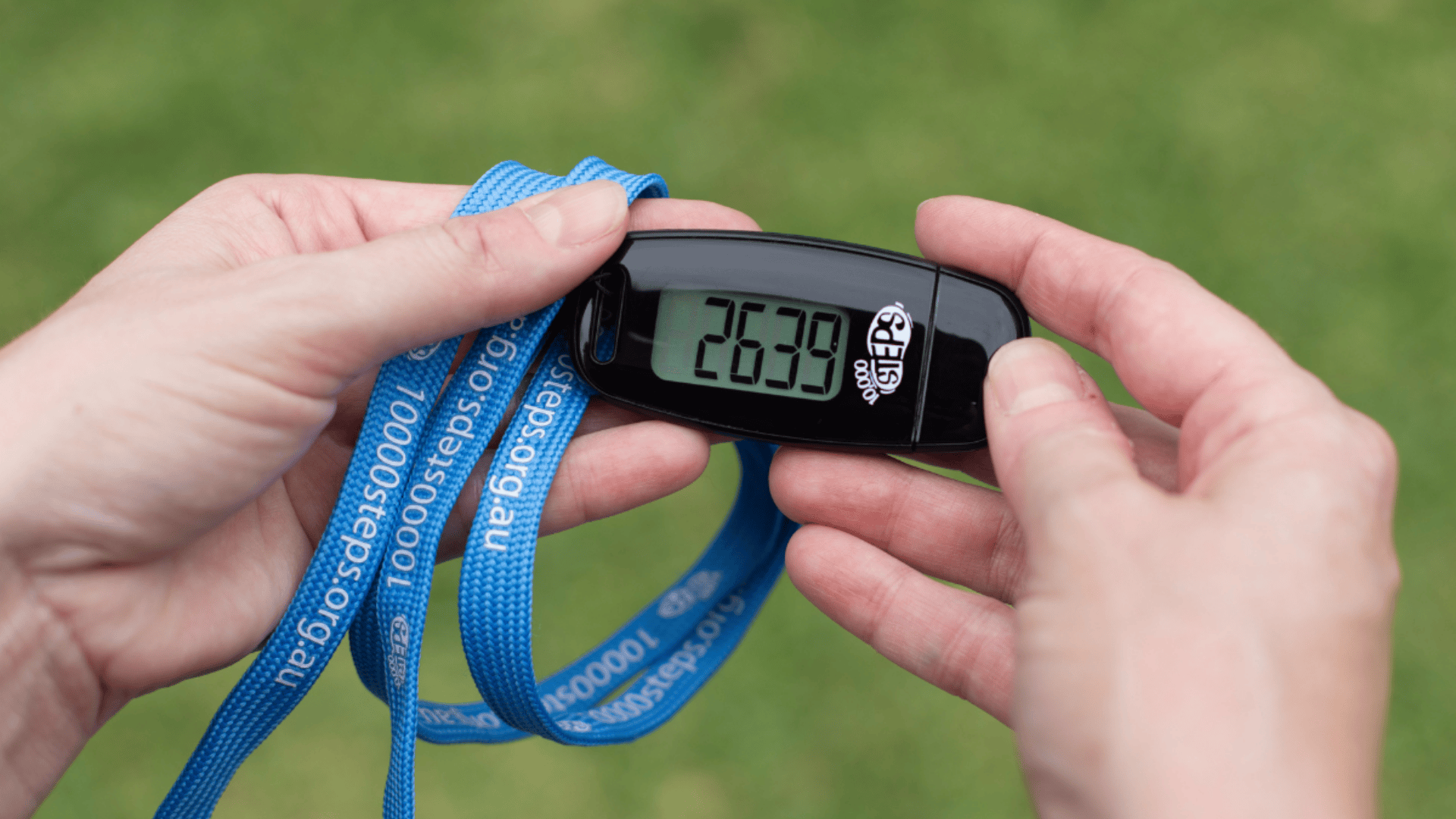I know how tough it can be to stick with a fitness plan when progress feels hard to see. That’s where a pedometer makes a real difference.
It takes something vague, like “moving more,” and turns it into a number you can check anytime.
The question is simple: how does a pedometer help people reach their fitness goals? In this blog, I’ll walk you through the ways step tracking supports daily activity, builds motivation, and keeps your goals on track.
You’ll also learn about accuracy, setup tips, and an easy two-week plan. By the end, you’ll know how to use your steps as a clear path toward better health.
Role of a Pedometer to Help People Reach Their Fitness Goals
1. See Your Progress in Real Time
Your pedometer shows exactly how many steps you’ve taken so far. By midday, you’ll know if you’re on track or need to adjust your pace later.
This instant feedback makes it easy to choose small actions, like taking the stairs or walking during a call, that add up by the end of the day.
2. Set Simple, Achievable Goals
Step tracking removes guesswork from your routine. You can start by adding 1,000 steps to your usual daily total.
Hitting that number most days builds activity gradually and safely, without complicated schedules or calculations.
3. Stay Motivated with Gentle Reminders
Most pedometers include nudges, streaks, or badges to encourage you to stay active.
A gentle reminder after sitting for too long can be all it takes to stand up, stretch, or take a few extra steps. These small cues make consistency easier, the key to lasting progress.
4. Turn Feedback Into Action
Research shows that people who track their steps tend to walk more. Seeing your progress throughout the day pushes you to finish strong before bedtime.
Over time, those extra steps translate into noticeable health benefits.
5. Small Steps, Big Health Gains
You don’t need drastic changes to see results. Moving from 4,000 to 6,000–7,000 steps per day can help control weight, lower blood pressure, and improve your mood.
If you’re already active, adding brisk walks or mild hills can increase intensity without taking much extra time.
6. Build Long-Term Habits
By combining awareness, goal-setting, and motivation, your pedometer turns everyday movement into measurable progress.
It’s a small device that helps you stay consistent, turning daily steps into lasting health improvements.
What a Pedometer Measures (and What It Doesn’t)

A pedometer can do a lot, but not everything. Knowing what’s accurate and what’s just an estimate helps you use the numbers wisely.
Here’s a quick breakdown of what most devices measure and how reliable those readings are:
| What It Tracks | How Reliable Is It | |
|---|---|---|
| Measures Well |
Steps: Core metric most people track Distance: Estimated from steps × stride length Active minutes: Time above a light-movement threshold |
Generally consistent when worn correctly; best for daily comparisons |
| Estimates (Rough) |
Calories burned: Based on steps, weight, and formulas Intensity: Some devices label “brisk” or “vigorous” |
Should be treated as ballpark figures, not precise values |
| Sometimes Included |
Heart rate: Found in most smartwatches and bands Sleep tracking: Monitors patterns, not full sleep quality |
Useful for trends, but not a replacement for medical devices |
The takeaway is simple: use steps and active minutes as your main guides.
Distance, calories, and other features are helpful extras, but they’re best viewed as supporting information, not the targets you base your entire routine on.
14-Day Step-Up Plan Using a Pedometer
Building habits takes time, and small daily steps are easier to stick with than big leaps.
This two-week schedule keeps things simple, adds movement gradually, and leaves room for recovery if your body needs it. Use it as a flexible guide, not a rigid rulebook.
| Days | Action | Tip |
|---|---|---|
| 1–3 | Track your normal steps to find a baseline. | Notice when walking feels easiest. |
| 4–7 | Add 500 steps/day using simple triggers (e.g., lunch walk, evening loop). | Split walks if joints feel sore. |
| 8–10 | Add 500–1,000 more; include one 10–15 min brisk walk on 3 days. | Try gentle hills or stairs for variety. |
| 11–14 | Hold steady and review weekly totals. | Adjust with reminders or buddy support. |
| 2×/week | Add light strength (squats, wall push-ups, calf raises). | Ten minutes is plenty to start. |
| Ongoing | Use supportive shoes and progress slowly if you have joint or heart issues. | Consult a clinician if the pain persists. |
How Pedometers Turn Numbers into Action

Tracking steps is only the first part of the story. What really matters is turning those numbers into meaningful action that supports your health.
By starting with a clear baseline and building on it in small, steady ways, you can make step goals feel achievable instead of overwhelming.
Here are some simple strategies to help you move more and make real progress:
- Find your baseline: Track a normal week without changing your routine. Write down your daily average so you know exactly where you’re starting.
- Set a realistic target: Add 500–1,000 steps above your baseline and hold that for a week. If it feels comfortable, add another 500–1,000 the next week. Gradual progress is easier to maintain and safer for your joints.
- Stack simple habits: Look for easy ways to add movement. Walk the first and last 5 minutes of lunch, turn phone calls into strolls, park farther from your destination, or take a 10-minute “step break” before streaming or gaming.
- Use your device features: Switch on inactivity alerts to remind you when you’ve been sitting too long. Set a daily reminder an hour before bedtime. If you’re short on steps, take a quick walk to close the gap.
- Map steps to weekly goals: Brisk walking counts toward the widely recommended 150 minutes of moderate activity each week. You don’t need to chase a perfect step number; adding steps above your usual level already boosts your health.
Pedometer Product Suggestions
Finding the right pedometer depends on your lifestyle and preferences. Some people prefer a simple clip-on, while others want the extra insights of a smartwatch or fitness band.
Below are a few popular options with features and benefits to help you decide.
1. 3D Clip-On Pedometer
Simple and affordable, this clip-on pedometer tracks steps accurately without any setup.
- Benefits: Extremely easy to use, no Bluetooth or apps required, long battery life (up to 12 months).
- Features: Large display, reset button, and compact design that clips to your pocket, belt, or lanyard.
2. Omron(HJ-325EW)
A trusted option from Omron, known for its reliability in step tracking and fitness devices.
- Benefits: Stores up to 7 days of step data, motivating you to monitor weekly progress.
- Features: Dual-axis accelerometer (accurate in pocket or bag), calorie burn estimates, and USB connection for data transfer.
3. Fitbit Inspire 3
A sleek fitness band that’s more than a pedometer, designed for those who want broader health tracking.
- Benefits: Monitors steps, heart rate, sleep quality, and even stress management, helping you get a complete view of your health.
- Features: Bright AMOLED display, smartphone notifications, multiple exercise modes, and up to 10 days of battery life.
Quick Comparison Table for Pedometers
Different pedometers suit different needs. Here’s a side-by-side look at what each offers.
| Device Type & Example | Strengths | Limitations | Best For | Approximate Price |
|---|---|---|---|---|
| Clip-On Pedometer (e.g., 3D Clip-On Pedometer) | Simple, no syncing, long battery life | Tracks steps only, no reminders or trends | Beginners who want easy step tracking | ~$12 – $18 |
| Midrange Pedometer (e.g., Omron HJ-325EW) | Stores history, calorie & distance tracking, good accuracy | Fewer features than smart bands, some syncing needed | Walkers who want more detail without complexity | ~$25 – $40 |
| Fitness Band (e.g., Fitbit Inspire 3) | Tracks steps, heart rate, sleep, stress, and sends reminders | Needs charging, more setup involved | Health-focused users wanting full tracking | ~$80 – $100+ |
Your choice depends on whether you value simplicity, balance, or complete health tracking.
Summing Up
So, how does a pedometer help people reach their fitness goals? It gives you simple, honest feedback that’s easy to act on.
You can see your starting point, set small step goals, and use reminders to keep moving. Over time, the numbers add up, and so does the way your body feels.
I’ve found that the real value comes from consistency. The device isn’t fancy; it’s just a tool. But if you use it daily, it can keep you accountable in a way that feels manageable.
If you’d like more practical tips like this, take a look at other posts on the website for ideas to keep your health up top!





